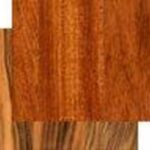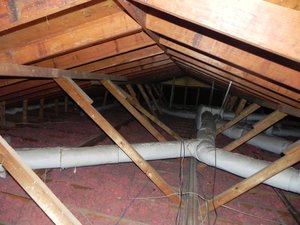Carpet padding can make all the difference in the world as to how soft your carpet is underfoot. By using carpet padding you can often buy a less expensive, thinner carpet and still get the same soft, luxurious feel of a thicker carpet. Not only that but it can add an extra layer of insulation to your floors, improve the acoustic quality of a room, and can actually lengthen the life of your carpet. Carpet padding can also help to conceal imperfections in a floor much better than laying the carpet directly on the floor. That means that less prep work needs to go into preparing the surface before laying the carpet which can save time and money.
There are quite a few types of carpet padding on the market and each has different benefits and features. The most common types of carpet padding include foam padding, waffle rubber padding, rebond padding, slab rubber padding, fiber padding and special padding designed for some types of Berber carpeting. Your salesperson at the carpet store where you purchase your carpet will be able to advise you as to which type of padding is best for the particular carpet that you choose for your room.
Once you have purchased your carpet and padding you will need to get the floor in your room ready to install the padding. If you already have carpeting you will need to remove it and any old padding that was underneath it. The old padding was probably attached with staples so you will need to use pliers to pull any of the old staples out of your floor since any that are left behind will create lumps or small bumps under your carpet.
If the old padding has been glued down it may be more difficult to remove. Try pulling as much of the old padding up by hand as you can and then use a glue solvent, which you can get at a home improvement or flooring store, to soften the glue. After the glue has been softened you should be able to remove any remaining padding and glue residue from your floor.
While you have the carpeting up it is a great time to repair your floor. Look for any holes or dents that need filling and repair any loose boards. You can also fix any squeaky boards at this point so your new floor will be free from squeaks and creaks.
Once your floor has been properly prepared you can begin the installation process. First, you will need to install carpet tackstrip around the perimeter of the room right next to the wall. This will eventually be used to hold the carpeting in place. Point the tacks toward the wall so that the carpet can be stretched against them when it is laid. Be sure to avoid installing tackstrip in front of your doorways and also check to be sure that all the corners meet nicely.
After all the tackstrip is down you should begin laying your carpet padding. To make installing the padding easier cut it into strips that run the length of the room. Be sure to leave enough length on the padding to cover the tackstrips while you are installing it. Begin installing it along one side of the room using staples to tack it down approximately every 6 to 8in. The staples should be placed near the edge of the tackstrip.
Continue installing strips of padding butting their edges up against each other, but not overlapping them until the floor is covered. Then go back with a carpet knife and trim off any excess padding just inside the tackstrips. Finally to give the padding some extra stability and structure use carpet tape to cover the seams.
Once you have finished installing your padding you are ready to install your carpet.




